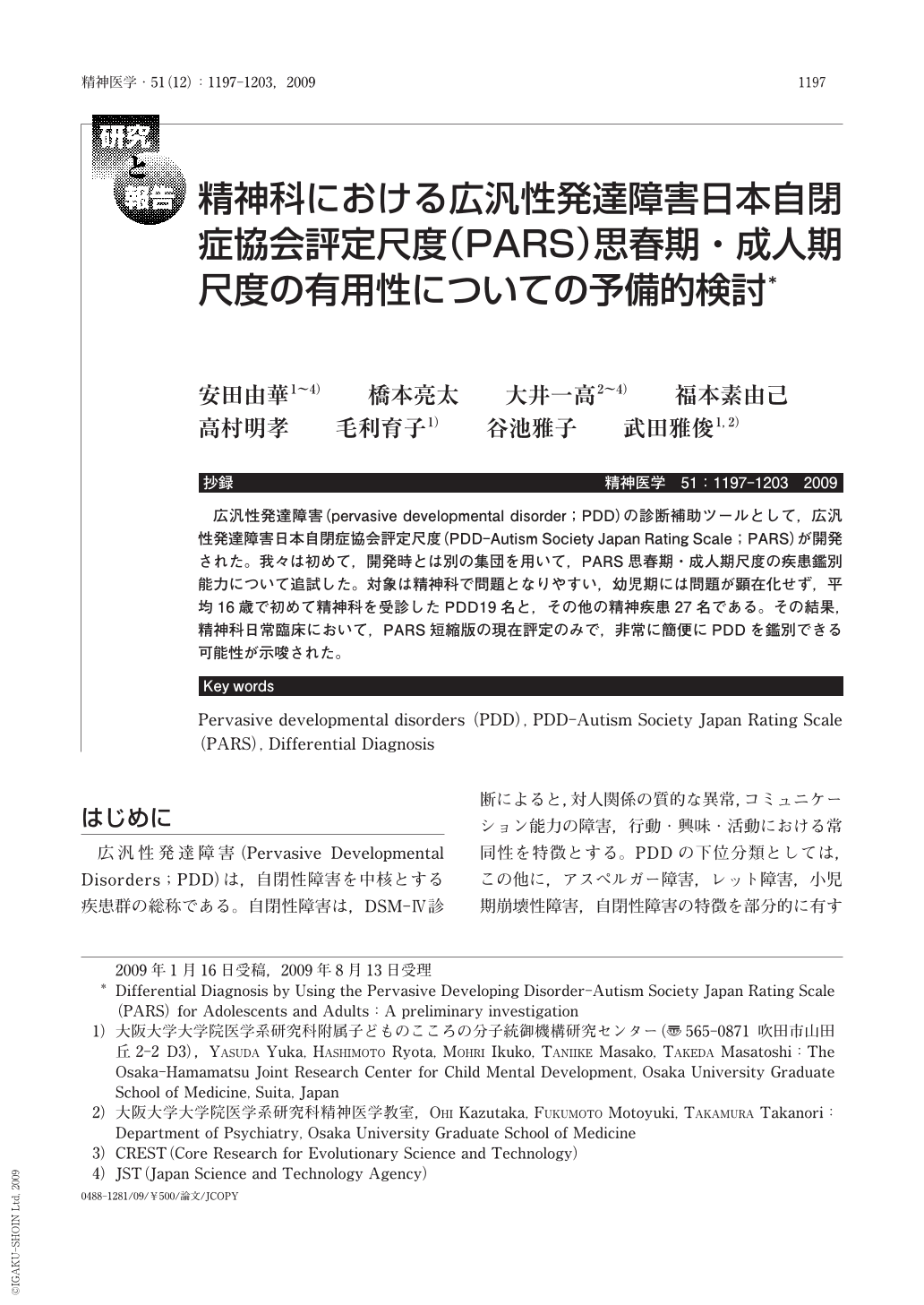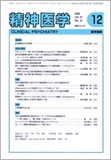Japanese
English
- 有料閲覧
- Abstract 文献概要
- 1ページ目 Look Inside
- 参考文献 Reference
抄録
広汎性発達障害(pervasive developmental disorder;PDD)の診断補助ツールとして,広汎性発達障害日本自閉症協会評定尺度(PDD-Autism Society Japan Rating Scale;PARS)が開発された。我々は初めて,開発時とは別の集団を用いて,PARS思春期・成人期尺度の疾患鑑別能力について追試した。対象は精神科で問題となりやすい,幼児期には問題が顕在化せず,平均16歳で初めて精神科を受診したPDD19名と,その他の精神疾患27名である。その結果,精神科日常臨床において,PARS短縮版の現在評定のみで,非常に簡便にPDDを鑑別できる可能性が示唆された。
It is often diffcult to differentiate pervasive developmental disorder (PDD) from other psychotic disorders in individuals having PDD but not childhood history of typical autistic phenotypes. The current paper focuses on the reliabilty of the PDD-Autism Society Japan Rating Scale (PARS) when used for the differential diagnosis of adolescents and adults with or without PDD. In this study, we assessed the sensitivity and specificity of the retrospective rating obtained using PARS (the full-scale and short versions) for adolescents and adults with PDD (n=19) and for patients with other psychiatric disorders (n=27) who were diagnosed according to the DSM-Ⅳcriteria;both the infancy subscale and the current subscale were used. The current subscale had good sensitivity (full scale, 83%;short version, 83%) and specificity (full-scale, 85%;short version, 89%) in identifying PDD, a finding similar to that reported in the original study "Reliability and Validity of the Pervasive Developmental Disorder (PDD)-Autism Society Japan Rating Scale (PARS):A behavior checklist for adolescents and adults with PDDs" that reported by Kamio et al (2006). In contrast, the infancy subscale showed worse sensitivity (full-scale, 32%;short scale, 42%) than that reported in the original study (corresponding values:94% and 91%), but good specificity (corresponding values:82% and 96%), which were similar to that reported in the original study. We anticipate that the current subscale of PARS (the short version) for adolescents and adults will permit clinicians to accurately differentiate between individuals with PDD from those who with other psychotic disorders, thereby allowing better diagnostic classification.

Copyright © 2009, Igaku-Shoin Ltd. All rights reserved.


